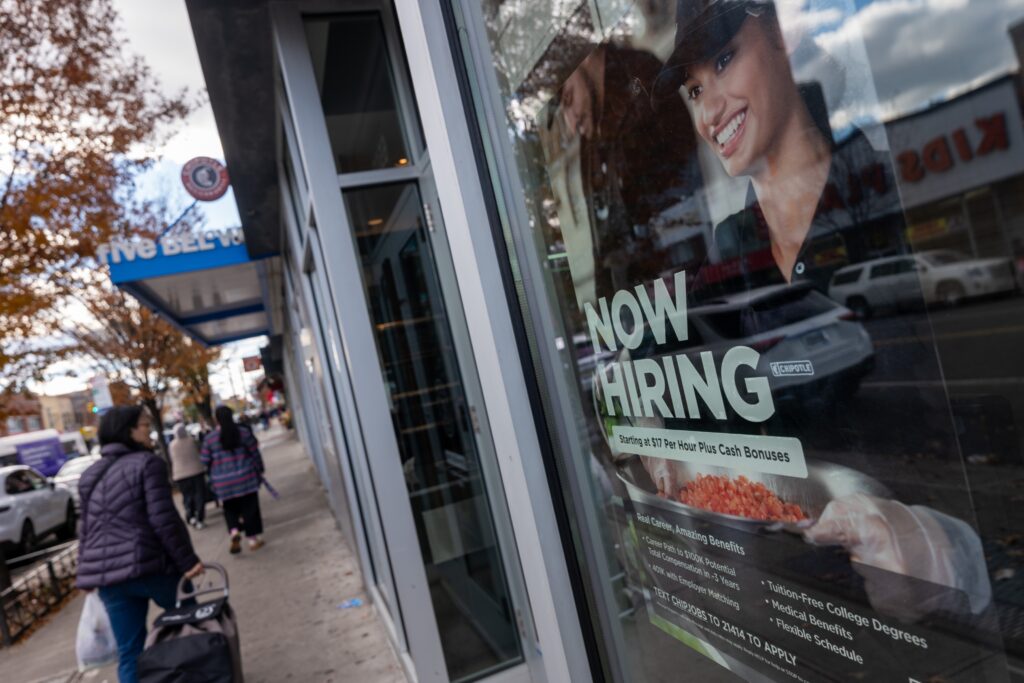It’s no secret that Americans are frustrated by the economy: Consumer sentiment has fallen for four straight months to one of its lowest levels on record, according to a closely watched metric from the University of Michigan.
In surveys, people report feeling exasperated by high prices and slowing incomes. The job market is weakening, and the stock market has been inching down from last month’s record highs. A measure by the Conference Board released Tuesday showed a sharp decline in consumer confidence in November.
“Consumer economic sentiment is suffering,” said Elizabeth Renter, senior economist at NerdWallet. “People are concerned about affordability, the labor market and business conditions.”
But not everyone is equally upset. A closer look at the data shows considerable variance based on factors such as a person’s age, income and political leaning. Some people are even feeling better about their finances now than they were a few months ago.
Here, in four charts, is a breakdown of who is feeling relatively good about the economy — and who isn’t.
1. Republicans
One of the biggest determinants of Americans’ views on the economy: who’s in the White House.
People tend to feel better about their financial situations when their political party is in power, according to surveys going back to the Reagan era. This split has become particularly pronounced in recent election cycles, as the country becomes more politically polarized.
Democrats, who were feeling glum about the economy during President Donald Trump’s first term, quickly changed their tune after Joe Biden was elected in late 2020. That trend quickly reversed last year, with Republicans giving the economy much higher marks once Trump won, according to the University of Michigan survey.
And although people across the political spectrum are feeling worse about the economy than they were a month ago, Republicans continue to have a much rosier outlook than Democrats or independents do.
2. Households with higher incomes
It’s not particularly surprising that Americans with higher incomes tend to feel better about the economy than their lower-paid counterparts. Wealthier households typically spend a smaller share of their incomes on basics, like gas and groceries, which means they have a bigger cushion to fall back on when prices rise.
Still, economists note that the gap between the highest earners and everyone else has recently widened, as economic stress begins to pinch the middle class. Consumer sentiment among middle-income families has tumbled 17 percent since July, compared with an 11 percent decline for those with both higher and lower incomes.
3. People who own stocks
The stock market has posted huge gains this year — hitting record highs, before retreating in the past month. Overall, the S&P 500 index is up 35 percent since early April and 16 percent for the year to date.
As a result, Americans with stocks are feeling flush, according to University of Michigan data through September. Sentiment among those with the top 20 percent of stock holdings, in particular, has picked up since March. But those without stocks are feeling worse about the economy than they have all year.
For context, roughly 60 percent of Americans own stocks, often in the form of retirement funds or mutual funds, according to a recent Gallup poll. Well-off Americans — with college degrees and household incomes of $100,000 or more — are most likely to have a stake in the stock market. Race also plays a role: 70 percent of White adults own stocks, compared with 53 percent of Black adults and 38 percent of Hispanic adults.
4. Americans under 35
Americans under 35 may have less wealth than older generations, but it turns out they’re more optimistic about the economy. That’s especially the case now, Conference Board data shows, with consumer sentiment among younger adults at a two-year high. Older cohorts, meanwhile, are feeling worse than they were a few months ago.
Economists say it isn’t entirely clear why young adults are feeling more hopeful than older generations but say recent wage growth trends may offer one explanation. Younger workers have also seen the largest annual incomes gains — 5.9 percent, as of August, for Americans ages 16 to 24, compared with a 4.2 percent increase for all workers, according to the Federal Reserve Bank of Atlanta.
In addition, younger adults, especially in their 20s, may still be living with their parents or relying on them for health insurance or other financial help, helping shield them from rising costs, said Dana Peterson, chief economist at the Conference Board.
“It’s a pretty notable gap, those under 35 and over,” she said. “They’re young, and they’re more optimistic, and that’s been the case since even before the pandemic.”
The post 4 charts show who’s feeling good about the economy — and who isn’t appeared first on Washington Post.




